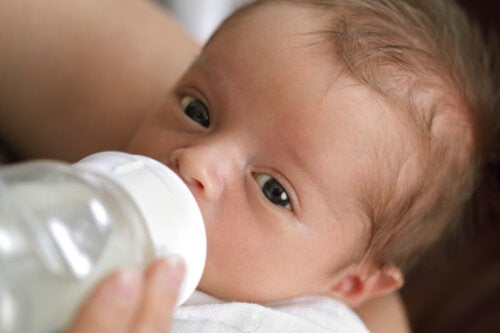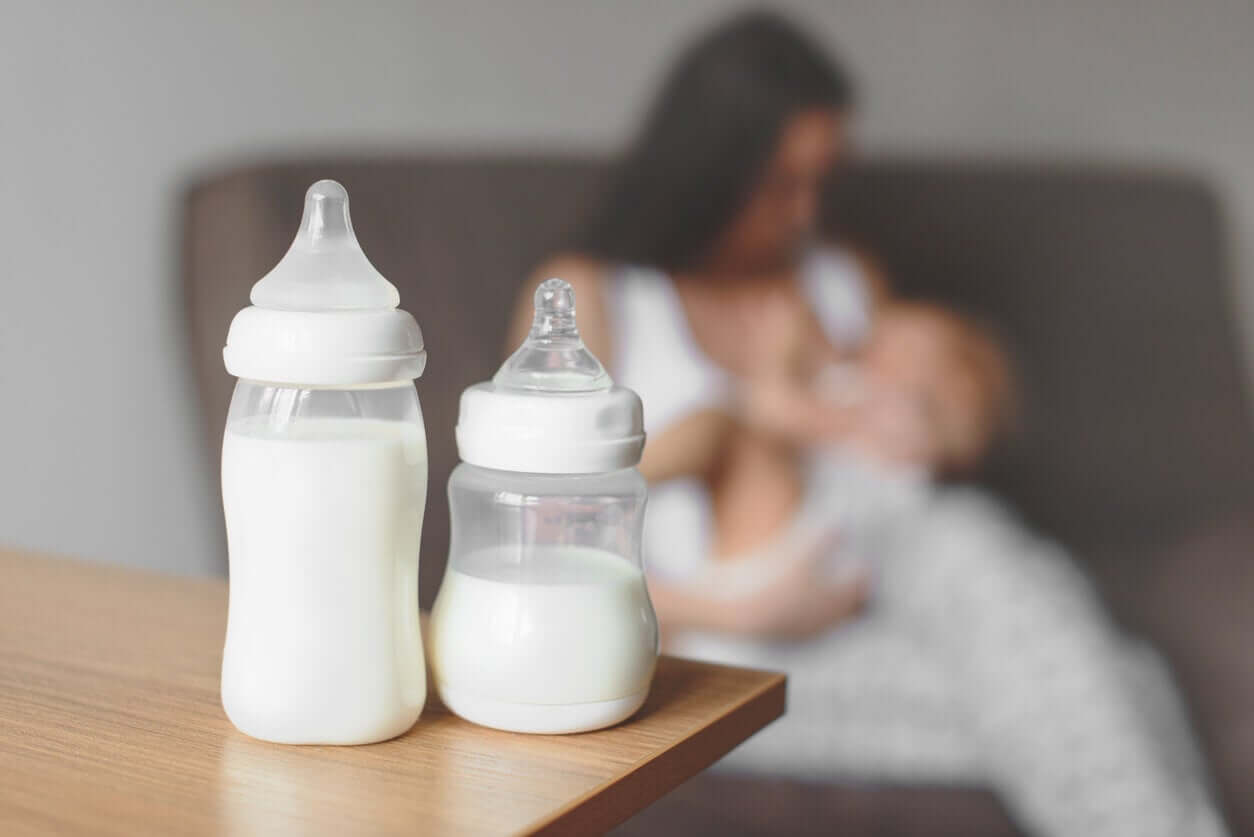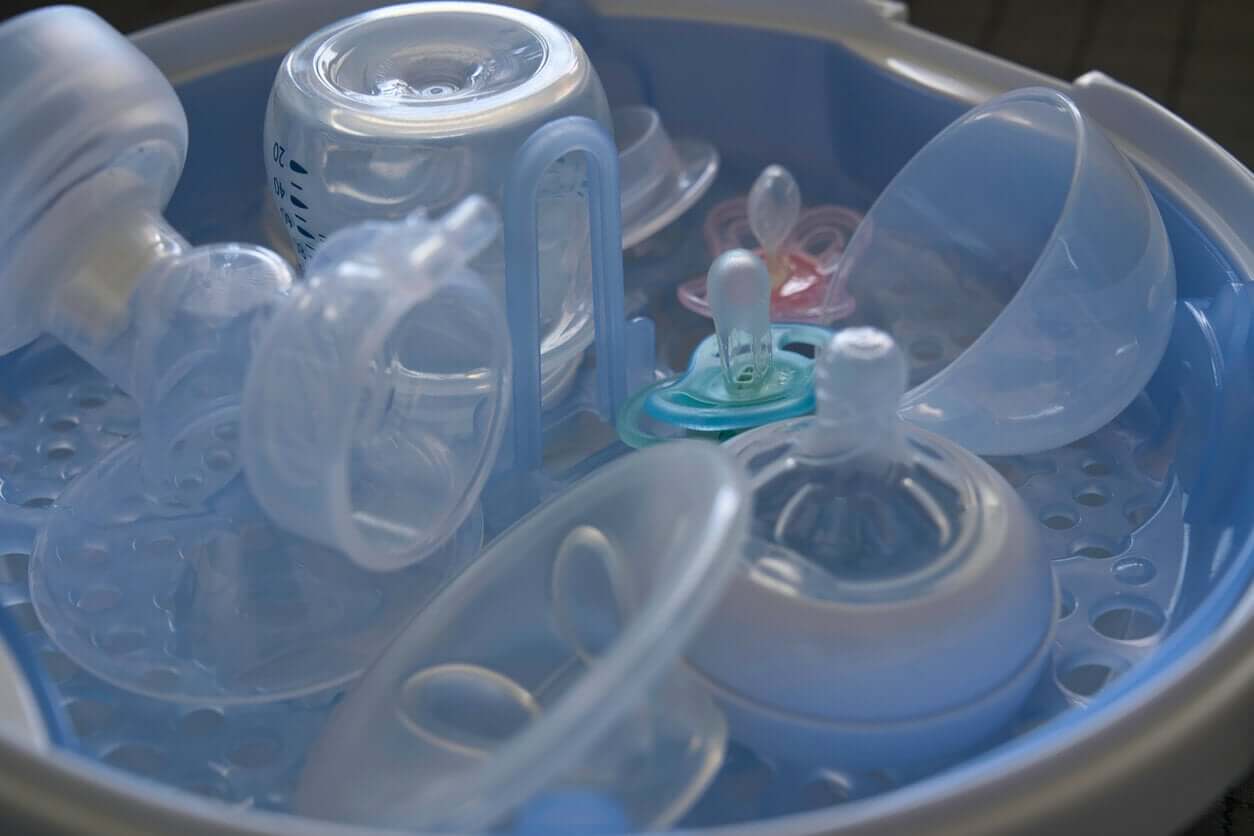Do You Have to Change the Nipple on a Bottle?
Wondering if you should change the nipple on your baby's bottle? We'll tell you everything you need to know about this issue.

Baby bottles can be great allies when feeding little ones. And knowing when you need to change the nipple on the bottle is of utmost importance, as it helps to ensure correct and safe nutrition.
A baby’s nutritional requirements change as they grow and the nipples must allow them to meet their nutritional needs. As a result, it’s important to change the nipple from time to time in order to offer your baby a greater flow of milk.
In addition, constant use, cleaning, and sterilization processes and the passing of time make plastic materials wear out and lose their properties.
Next, we tell you much more. Don’t stop reading!
The nipple of the bottle

The nipple is the part of the bottle that comes into contact with the baby’s mouth. Its shape simulates that of the mother’s nipple to facilitate the feeding of the child.
On the market, there’s a wide variety of materials, sizes, and designs to meet the particular needs of each child. Therefore, when choosing the most appropriate one, you’ll need to consider the age of the baby, the type of suction, and individual preferences. In fact, many times, you’ll have to try several models to find the best one.
When do you have to change the nipple on a bottle?
The first sign to know that you should change the nipple on a bottle is the baby’s own growth. As the child develops, their abilities to feed themselves and their nutritional needs change.
The nipple for a newborn has one or two small holes that allow a slow flow of milk. In addition, this makes sucking easier because it doesn’t take too much force to release the food contained in the bottle.
Between 2 and 4 months, babies usually require a greater volume of milk and also have better management of the muscles of the oral cavity. They suck harder and feed more efficiently. In addition, as they’re awake and active longer, they begin to demand more milk.
Due to all the above, at this age, it may be necessary to change the nipple and the bottle itself. Using a larger capacity bottle and a more elongated, medium-flow nipple make the feeding process easier.
At the time of the introduction of complementary feeding, the most advisable thing is to introduce the food to the child gradually and allow it to be manipulated and explored. In any case, bottle use continues as breastfeeding is the main source of nutrition at this age.
When changing food requirements and even nutrition practices, you need to change the nipple again for one with an even larger hole.
How do you know that you have to change the nipple?
Observe the way your baby feeds to see if it’s necessary to change the nipple of the bottle. Consider the following signs:
- Your baby takes too long to finish their bottle (more than 25 minutes). This may indicate that the nipple is too small for your age.
- The child uses a lot of force when sucking and the bottle hardly empties. Most likely, the nipple is very small. This can make your baby swallow too much air and feel more irritable.
- The milk spills out of the baby’s mouth without the baby being able to swallow the food at a normal rate. The outlet hole may be very large, so you’ll need to change the nipple for one that allows for slower suction.
Nipples deteriorate

Although bottle nipples are made of safe materials, their wear and tear is inevitable. The constant suction, the cleaning process, and the heat of the sterilization end up spoiling them.
It’s very important to pay attention to the state of this element frequently, as well as that of the other components of the bottle. You should check that they’re complete, intact, and without loose or almost detached elements. If you detect any visible defects in the bottle or nipple, replace them immediately.
In addition, the elements of infant nutrition tend to be a source of fungi or bacteria, so their correct maintenance is essential. All the folds of the nipple should be checked and cleaned, as that’s where the remains of the food are usually left.
Proper cleaning and sterilization of each part of the bottle prevent the proliferation of microorganisms that are harmful to the baby.
In general terms, you should change the nipple on the bottle every two or three months, or sooner if it’s damaged or deteriorated. Leaving yourself a note with the exchange date is a good strategy to avoid overlooking the replacement.
Baby bottles in good condition
Changing the nipple on the bottle when necessary and keeping this utensil in good condition is just one part of caring for your little one.
Being responsible with the maintenance of your baby’s bottle will allow you to offer adequate and safe nutrition.
